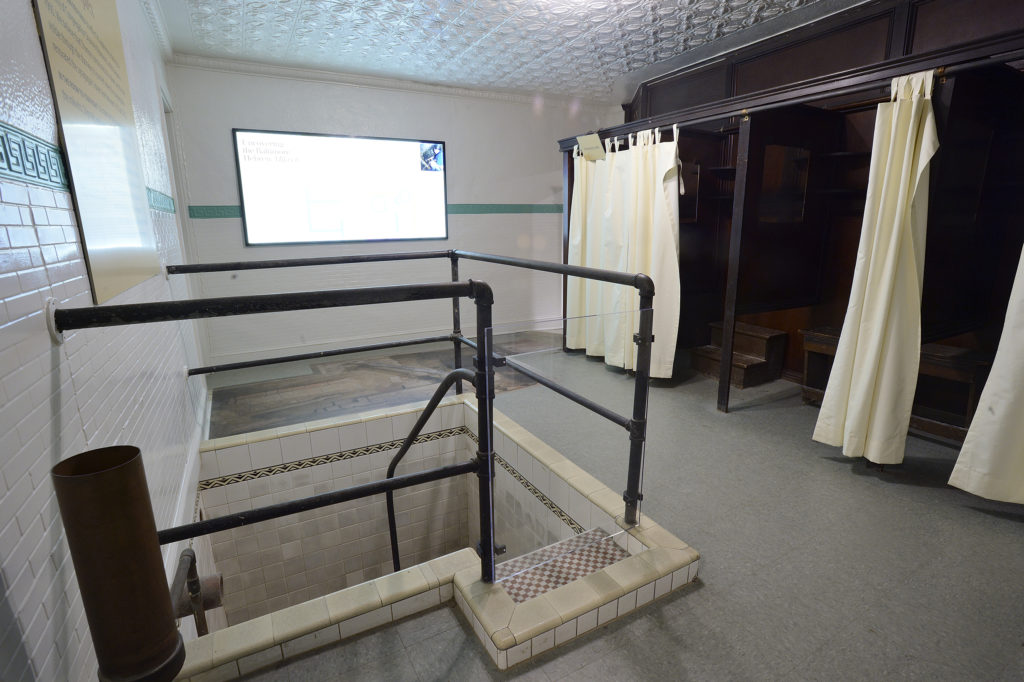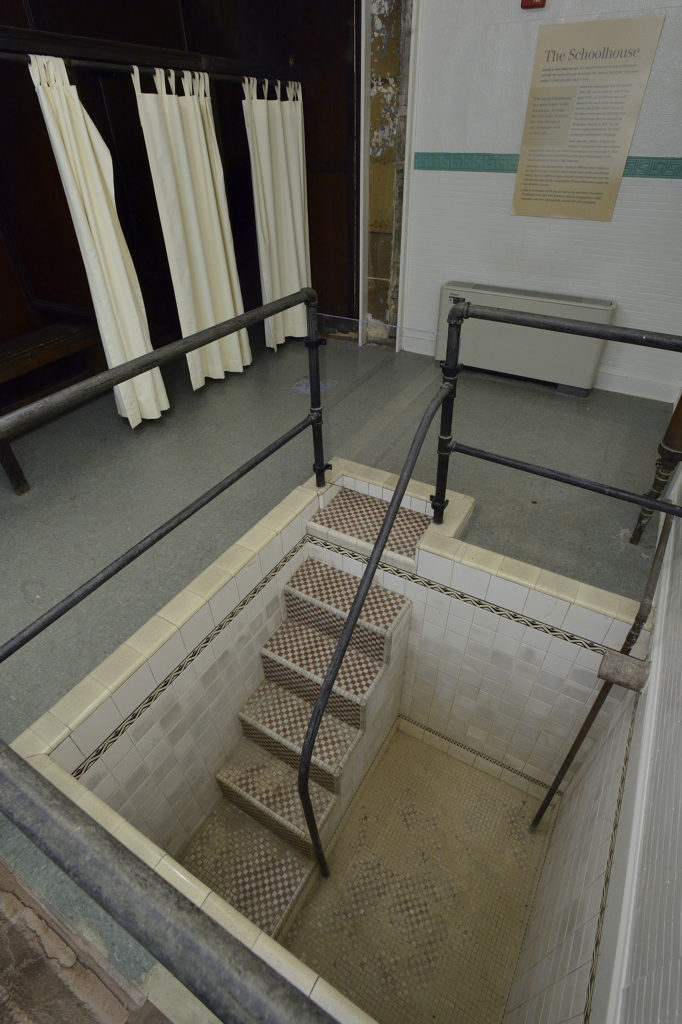Ask Our Docents: A Blog Series Part IV

On January 31st JMM’s Volunteer Coordinator Wendy Davis will be taking a dip into what we know about the historic mikva’ot (ritual baths) of the Lloyd Street Synagogue. Leading up to her presentation Diving Into History: The Historic Mikva’ot of the Lloyd Street Synagogue, this month’s Ask Our Docents answers some questions that visitors often ask while visiting the mikvah during a guided tour.
You can also check out previous Ask Our Docent blog posts or explore other stories from volunteers.
Paige Woodhouse, Project Manager

Question: What is a mikvah, and when does someone use a mikvah?
JMM Docent Rita answered: Since the earliest days of the Bible, the Jewish people have followed the laws related to the Mikvah. The concept of ritual cleanliness and spiritual purity first appears in the book of Leviticus, chapter 15, where we read that before resuming marital relations with her husband, the wife must immerse herself in the waters of the Mikvah. In Numbers, chapter 19, we are told that someone who has come in contact with the dead must also purify himself.
Since Biblical times, Rabbinical literature has developed specific rules for building the Mikvah, the type of water, and the preparation for entry into the Mikvah. Any building material is valid for a Mikvah as long as it is not prefabricated. The size must be one cubit wide, one cubit in length, and three cubits high, and it must be watertight, as leakage would render the Mikvah invalid. The water must flow from a natural source, such as a spring, or a continuous flow of water from rain, snow, or ice.
In modern times, in addition to the reasons mentioned above about Mikvah usage, it has become obligatory for certain Jewish denominations to require immersion as part of the ceremony of conversion to Judaism. Often men will enter a separate Mikvah before the Sabbath or before Yom Kippur for spiritual purity. Physical cleanliness, including bathing, hair washing, and trimming nails, is required before entering the Mikvah. Today some Mikva’ot appear as part of a spa center. One can visit historic Mikva’ot in Israel and Europe, dating back 2,000 and 1,000 years, respectively.

Question: Are there any active mikva’ot in Baltimore, or Maryland, today?
JMM Docent Helene: Yes, I know of at least 3. The one I am most familiar with is the Soul Center at Beth El, a conservative synagogue. It is very beautiful and is lovely to go to. In addition to the mikvah, it has a community space, coffee, tea, books, and many wonderful classes (currently being done on zoom). The other two that I know of are essentially for the Orthodox community. I haven’t been to them.
Helene also generously shared her personal experience at the Mikvah. She often tells this story with visitors during her tours of the Lloyd Street Synagogue:
Prior to getting married, my mother asked if I would like to go to the Mikvah. I declined when I learned that I would have to cut my nails, be nude, and the Mikvah lady would inspect me to be sure that I had prepared properly before entering the mikvah. About 30 years later, when my daughter was getting married, she told me she would like to go to the Mikvah. I was very surprised. I asked how she would feel if I went also. Her response was, “I was hoping you would.”
We went to Beth El Mikvah (1993, prior to the Mikvah in the Soul Center). Nomi went first while I waited in the anteroom with the Mikvah lady, who told me I didn’t have to cut my nails, just clean under them. When Nomi came out, she was wrapped in a towel and went directly to the Mikvah. Afterward, she was radiant. Now it was my turn. I went into the prep room that was billed as beautiful by the Jewish Times. It was essentially a very small ordinary bathroom: a tub with a shower, toilet, sink, mirror, and a hairdryer that didn’t reach the mirror. I showered, washed, and combed my hair so there would be no strays, cleaned under my finger and toenails, wrapped in a towel, and walked to the Mikvah. To my relief, the Mikvah lady did not look me up and down. She turned away as I dropped the towel to enter the water. After I was in, she told me the prayers to say as I totally immersed x3. I then walked back to the same prep room I had been in just minutes before. Strangely, the room’s appearance and the fact that the hairdryer didn’t reach the mirror, it longer mattered. I felt changed but couldn’t state how.
After I dressed in my same ordinary clothing, my daughter and I went to lunch. I thought she looked radiant, and she thought the same about me. In fact, as we crossed the street, cars honked at us and gave us “thumbs up.” It was extraordinary. I can’t explain the amazing difference we both felt after this experience.

This blog series is shared as part of our year-long 175th Lloyd Street Synagogue anniversary celebrations. Thank you to all the JMM Docents for continuing to share their knowledge and passion with us. Keep an eye out for next month’s edition!
